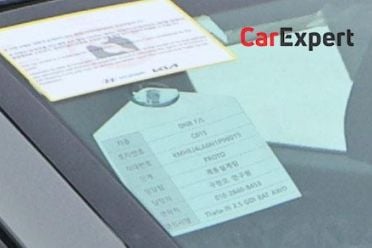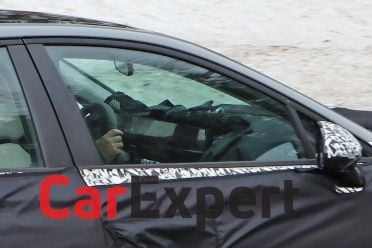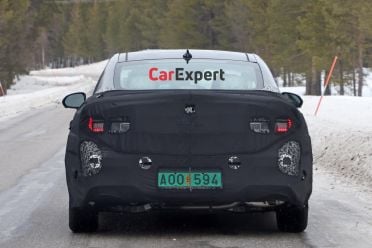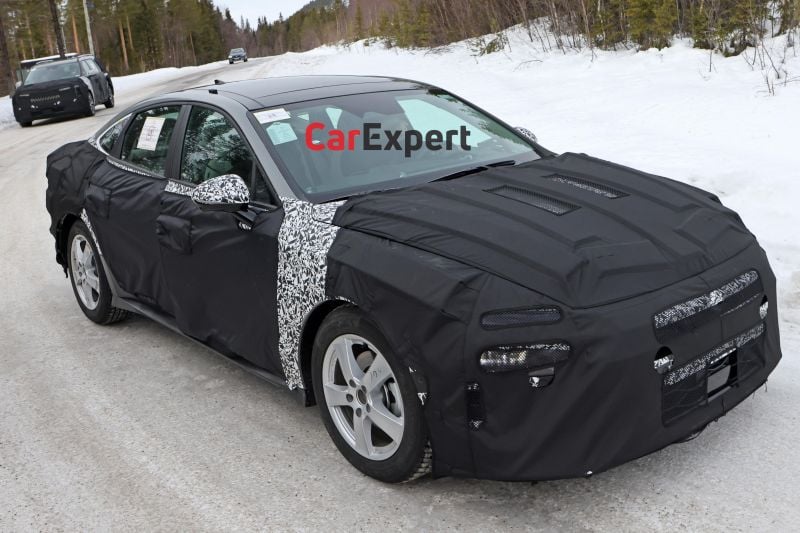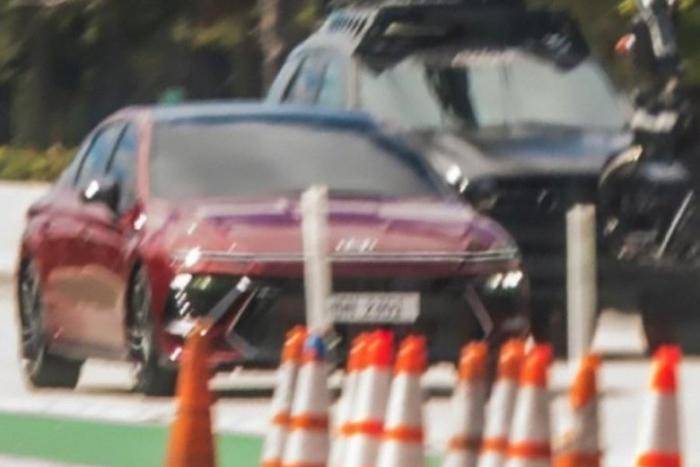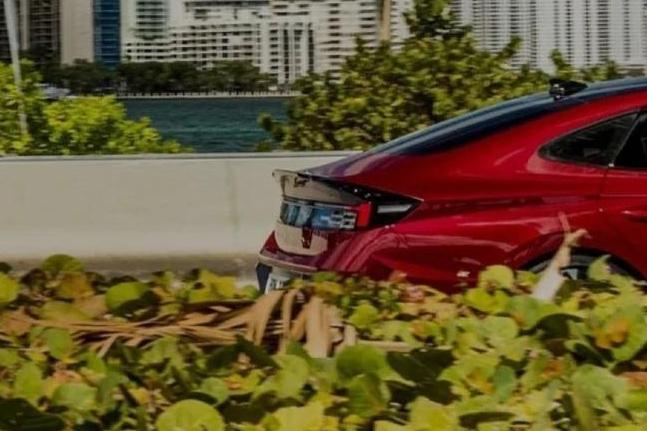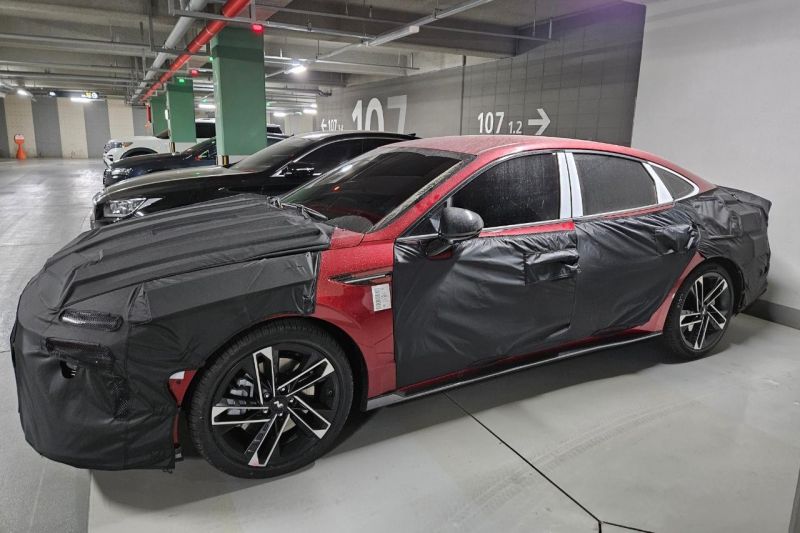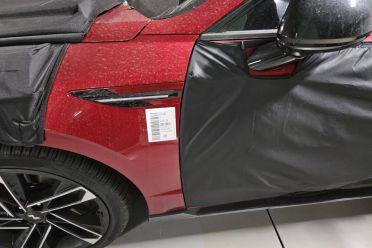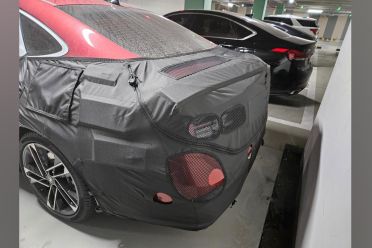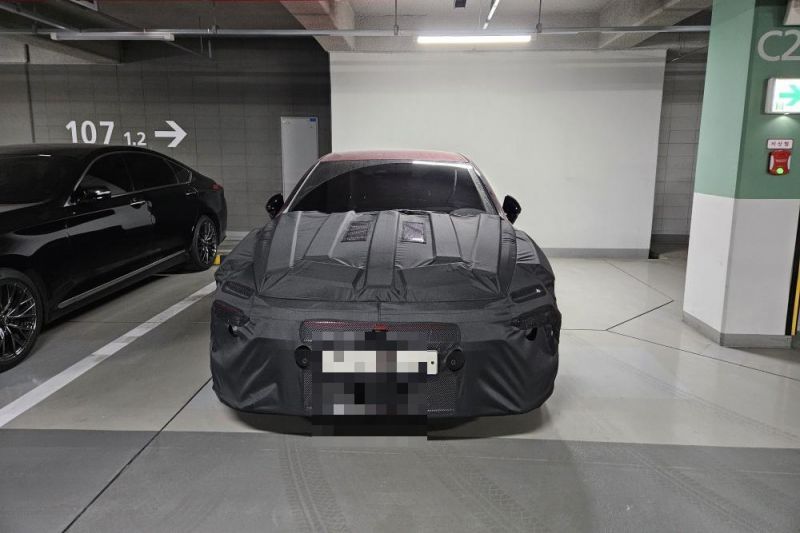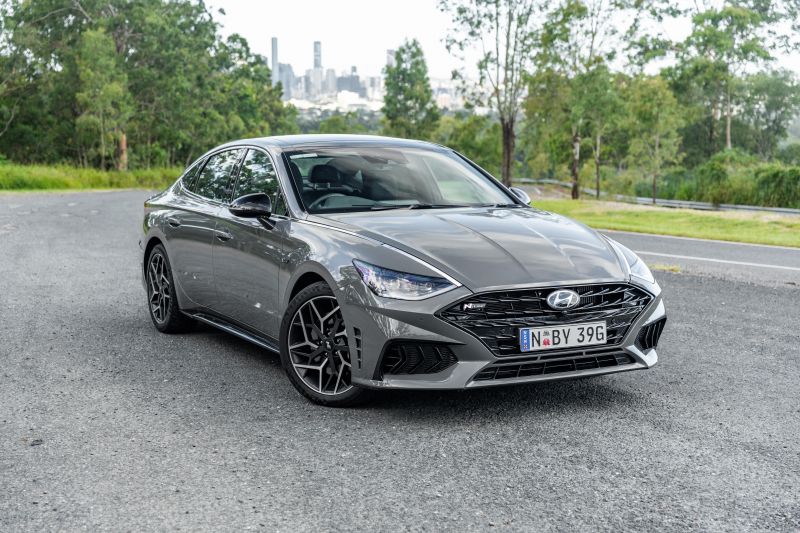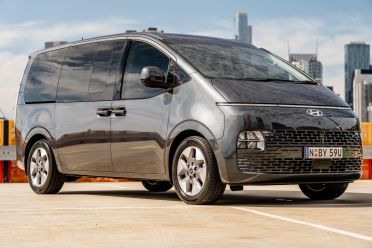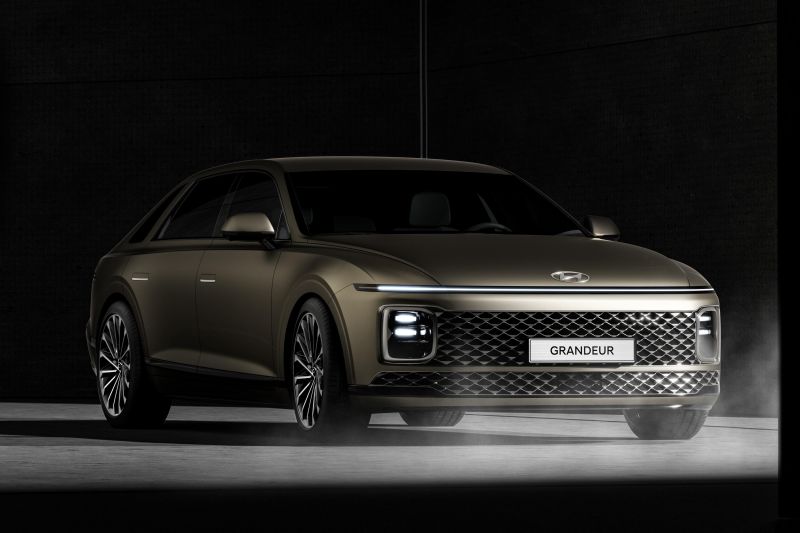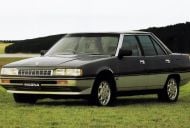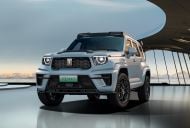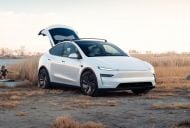Hyundai is known for fairly substantial mid-life updates, but this one could be one of its most extreme yet.
A prototype of the upcoming 2024 Hyundai Sonata facelift has been spied testing in Sweden, and a window sticker indicates it has all-wheel drive.
We can make out “proto”, “Theta”, “2.5 GDI” and “AWD”.
Should this be accurate, it would not only represent a significant change for a mid-life update – particularly for a vehicle rumoured to not be getting a next generation – but also the first time all-wheel drive has been offered in Hyundai’s mid-sized sedan.
Peering into the cabin we can also see a new, larger touchscreen, situated in the same housing as the digital instrument cluster.
As for the mention of “Theta”, Hyundai has moved away from Greek letters for its engine names, but the current naturally aspirated and turbocharged 2.5-litre four-cylinder Smartstream engines replaced Theta engines.
Both are used in the current Sonata, though only the latter is offered in Australia.
We can’t make out the number before “AT”, but the turbo 2.5-litre N Line is mated with an eight-speed dual-clutch automatic transmission while the regular 2.5-litre uses an eight-speed torque-converter auto.
While an all-wheel drive turbocharged option would address some of the criticisms we’ve had of the current N Line, it’s possible Hyundai has developed an AWD option for the atmo 2.5-litre.
The prototype appears to lack the sportier styling touches of the turbocharged N Line.
The related Kia K5 offers all-wheel drive, but only with the base turbocharged 1.6-litre four-cylinder engine.
In North America, the rival Toyota Camry and Nissan Altima also offer available all-wheel drive, but again only with their base engines.
The facelifted Sonata was spied last month completely undisguised in what appeared to be N Line guise, with a couple of quick shots taken seemingly during a B-roll or TV commercial shoot.
That suggests a full reveal is imminent.
The updated Sonata is the latest Hyundai to gain a prominent, full-width LED daytime running light bar across the front of the car, as seen on the Grandeur, Staria and next-generation Kona.
The headlights sit underneath, while there’s a hexagonal grille area bracketed with chrome trim.
Another, clearer shot of the rear shows refreshed tail lights with darkened elements. There appears to still be a full-width light bar.
Previous spy photographs of a disguised Sonata N Line prototype have also given us a better look at the new alloy wheel designs, plus new fender vents.
The current car’s distinctive fender-mounted chrome strips – which blend with the LED daytime running lights – appear to have been removed.
The roof and greenhouse appear unchanged, though a report last year suggested disappointing sales in Korea had led to Hyundai ordering an extensive facelift.
This wouldn’t be the first time the Sonata had received a substantial mid-life update with dramatically different front- and rear-end styling, with another example being the 2001 facelift of the EF-series model.
The same report, from Korean outlet Chosun, also said no next-generation Sonata was in development. At the time it was published – May 2022 – work on a new Sonata should theoretically have been well underway.
Insiders reportedly told Chosun it’s an open secret in the company the Sonata will be discontinued, with its assembly lines set to be converted to produce more electric vehicles, and that an electric Sonata was a possibility but not a priority.
“We can’t rule out an electric Sonata, but we’re prioritising the development of a compact electric car rather than a less popular midsize vehicle,” said the insider.
Hyundai has also introduced a similarly sized electric model, the Ioniq 6.
The Sonata was the ninth best-selling car in Korea in 2022, when as recently as 2015 it was the country’s best seller.
Sedans remain popular in the Korean market, so while it was overtaken by various SUV models it was also outsold by the Avante (aka i30 Sedan) in sixth place and the larger Grandeur in third place.
The Sonata has long been one of the best-selling vehicles in the particularly insular Korean new car market, where Hyundai and Kia hold a combined share of over two-thirds.
The current model entered production in 2019, though it only arrived here in 2021. Hyundai also ended up bringing only the turbocharged 2.5-litre N Line, instead of the naturally aspirated 2.5-litre and turbocharged 1.6-litre four-cylinder engines originally mooted for Australia.
Despite being available only in a single variant, the Sonata still managed to outsell the Honda Accord and Peugeot 508 in Australia last year.
The Sonata is Hyundai’s longest-running nameplate, having first debuted in 1985 on an upmarket version of the rear-wheel drive Stellar.
The first front-wheel drive generation arrived here in 1989, and overall Hyundai has sold over nine million Sonatas globally during its run.
Hyundai can’t seem to catch a break with the Sonata as it tries to juggle multiple markets with competing demands.
The daring 2009 redesign – sold here as the i45 – drove the Sonata to its highest sales ever in the US, but it received mixed reviews in the more conservative South Korean market.
A conservative rebodying was introduced in 2014 to appease Korean buyers, but US sales ceased their rapid ascent.
A substantial mid-cycle update was introduced in 2017 with sportier styling, before the current model was introduced in 2019. Once again, however, its styling was too radical for many Korean buyers.
Hyundai can’t rely on US sales, either, as the entire mid-sized sedan segment there is on a downward trajectory.
Buick, Ford, Mazda and Volkswagen have all recently withdrawn from the segment in the US, while Sonata sales fell below 100,000 units in 2019 for the first time since 2003.
The brand’s sales have also been steadily declining in China for the past several years.


